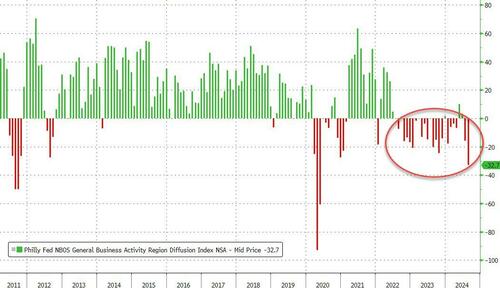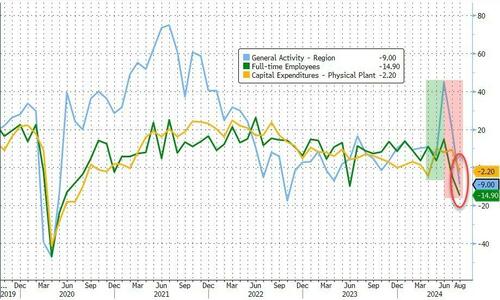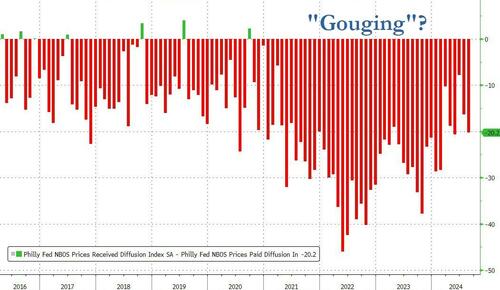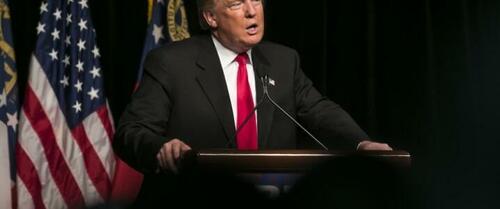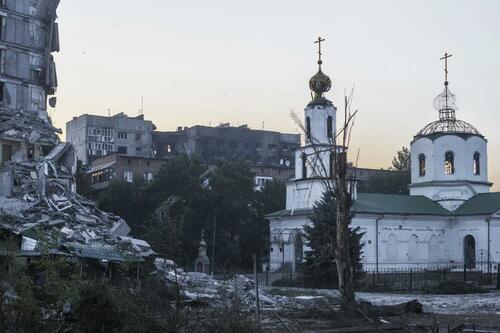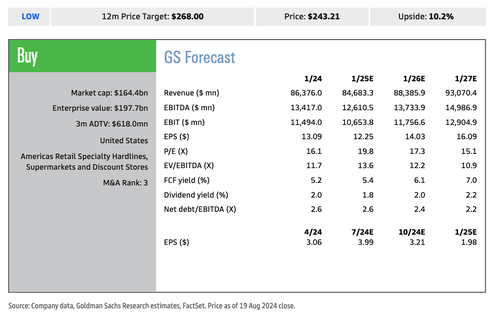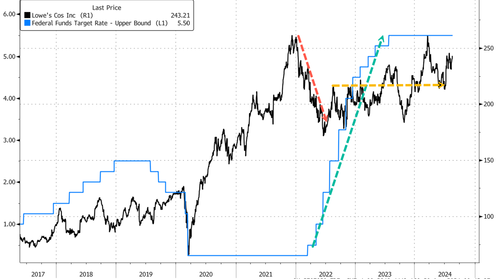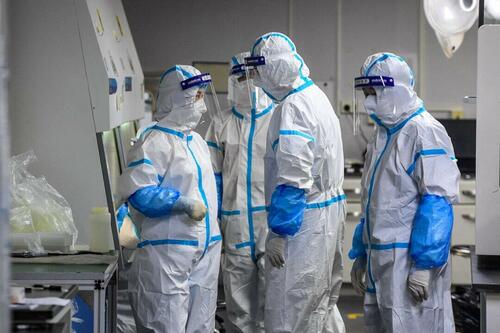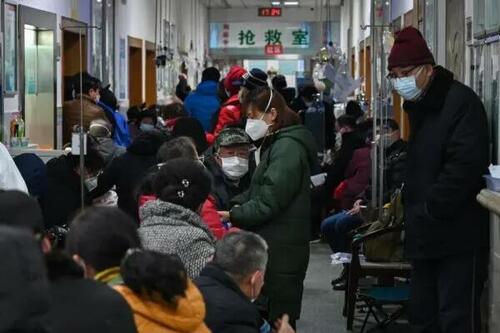Authored by John Haughey via The Epoch Times,
Since the Senate unanimously passed the Prohibiting Russian Uranium Imports Act and President Joe Biden signed it into law in May, at least five shuttered uranium mines across four U.S. states have been reactivated in response to accelerating global demand for nuclear-powered electricity.
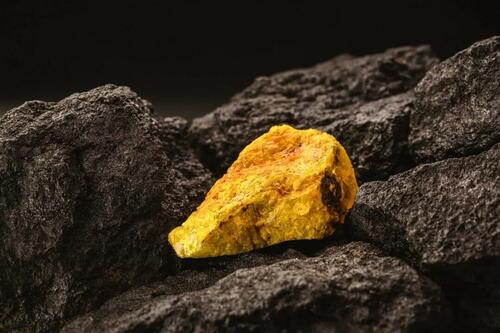
The latest reopening was Uranium Energy Corp. (UEC), which announced on Aug. 13 it has resumed production at its Christensen Ranch in-situ recovery operation in Wyoming’s Powder River Basin, with plans to begin shipping yellowcake—milled uranium oxide—from its nearby Irigaray Central Processing Plant by December.
Noting that 94 nuclear reactors operating in 55 power plants currently generate 20 percent of the nation’s electricity, UEC president and CEO Amir Adnani said the reopened mine and processing mill is an investment in reinvigorating a domestic industry that is vital to economic stability and national security.
“U.S. production has been virtually non-existent for many years, suffering from price insensitive imports via foreign state-owned enterprises that undermined domestic mining and investment,” he said, citing the bill and other actions as keys in reestablishing “the foundation of a robust nuclear fuel supply chain” in the United States.
The bill was adopted by the House in a 365–36 February vote and formally went into effect on Aug. 11. It is designed to usher in “a nuclear renaissance” with trimmed regulations, streamlined permitting timelines, and $2.7 billion in incentives and tax credits to expand domestic uranium enrichment capacity.
The Prohibiting Russian Uranium Imports Act was followed by the creation of a federal Nuclear Power Project Management and Delivery working group in May and the adoption of The ADVANCE Act in June, which is geared to tripling domestic nuclear power production by 2050 with billions more in incentives and tax credits to promote evolving technologies such as small modular reactors.
None of this is possible without the mining and processing of uranium—an industry dominated for decades by Russia and Kazakhstan, a former Soviet Union state closely aligned with the Russian Federation.
A half-century ago, the United States was the world’s largest uranium producer. In 1980, domestic operators produced and processed 44 million pounds of yellowcake—about 90 percent of the uranium used by 251 nuclear power plants that generated 11 percent of the country’s electricity, according to the U.S. Energy Information Administration.
By the post-Cold War mid-1990s, however, U.S. nuclear power plants were increasingly importing less expensive low-enriched uranium largely from Russia and Kazakhstan.
Uranium extraction and processing in the United States—already hampered by stiff mining regulations, lengthy permitting processes, litigation, and high operations costs—was further derailed by the 2011 Fukushima disaster in Japan.
By 2021, only 5 percent of the uranium used by the 55 nuclear power plants operating in the United States was produced domestically, with Canada (27 percent), Kazakhstan (25 percent), Russia (12 percent), Uzbekistan (11 percent), and Australia (9 percent) being the leading suppliers for U.S. plants.
Anfield’s Shootaring Canyon Uranium Mill sits in the middle of the Utah desert outside Ticaboo, Utah, on Oct. 27, 2017. Anfield is in partnership with the Russian firm Uranium One and bought the mill from Uranium One in 2015. The House of Representatives is getting ready to investigate the Obama-era approval sale of Uranium One to a Russian company. George Frey/Getty Images
Russia’s February 2022 invasion of Ukraine underscored how important it is for the United States and European Union nations to end reliance on imported uranium from Russia and Kazakhstan, spurring bipartisan action by Congress.
With the slate of 2024 bills and the 2020 establishment of a strategic uranium reserve to stockpile domestically produced uranium, “Russia’s chokehold on America’s uranium supply is coming to an end,” Sen. John Barrasso (R-Wyo.) said in a May 8 address from the Senate floor.
“Last year alone, our industry paid over $800 million to Russia’s state-owned nuclear energy corporation, Rosatom, and its fuel subsidiaries,” he said. “That number could be even higher this year and these resources are no doubt going towards funding Putin’s war efforts in Ukraine.”
“Production from stable jurisdictions is valued in today’s volatile world and has become a renewed priority in utility purchasing strategies,” Scott Melbye, executive vice president of U.S.-based Uranium Energy Corp (UEC), said.
He said uranium “carries a unique demand profile, not only applicable for U.S. and Western utilities’ security of supply, but also for U.S. national security.”
Melbye is also the president of Uranium Producers of America, a trade association based in Santa Fe, New Mexico, that represents 12 U.S.-based uranium extraction and processing companies that, with UEC’s reopened Christensen Ranch, operate 15 in-situ recovery (ISR) operations nationwide.
An Ugly Legacy
In ISR, or in-situ leaching, the ore remains in the ground and minerals are dissolved from the rock with a leaching solution through a series of wells. The solution is then pumped to the surface for extraction in a recovery plant.
Compared with the open-pit mines of the past—an estimated 1,000 remain abandoned across the West, with half in the Four Corners region of New Mexico, Colorado, Utah, and Arizona—in-situ mining causes less surface disturbance in a smaller footprint, uses less water, and leaves no contaminated tailings or waste rock.
Melbye said that when the United States led the world in uranium production 40 years ago, most operations were open-pit mines. Now, he said, about 90 percent will be ISR.
Nevertheless, critics argue, in-situ mining – uranium mining, generally – poses risks, including the potential for groundwater contamination with radon, heavy metals, and leaching fluids.
Local tribe leaders speak before President Joe Biden signs a proclamation creating the Baaj Nwaavjo I’tah Kukveni Ancestral Footprints of the Grand Canyon National Monument at Red Butte Airfield, Ariz., on Aug. 8, 2023. Madalina Vasiliu/The Epoch Times
The industry also has a bad reputation across much of the West Coast, especially with the Navajo Nation and Hopi and Havasupai tribes in New Mexico and Arizona, where radioactive waste and dust, heavy metals, and acid mine drainage from uranium mining have fostered cancers and other health issues since the 1940s.
That history—and the failure to remedy “unremediated” abandoned mines—is among the reasons the Havasupai Tribal Council and others virulently opposed the January 2024 restart of uranium producer Energy Fuels Resources’ Pinyon Plain uranium mine in Arizona’s Kaibab National Forest—about seven miles south of the Grand Canyon.
Closed since the 1980s, the mine is beneath Red Butte, which many tribes, including the Hopi and the Havasupai, say is sacred. President Biden signed a proclamation incorporating Red Butte into the Baaj Nwaavjo I’tah Kukveni Ancestral Footprints of the Grand Canyon National Monument in August 2023, but under Energy Fuels Resources’ pre-existing permit, the mining activities remain legal.
The 17-acre open-pit operation employs 60 people and is expected to tap out by 2027 after producing at least 2 million pounds of uranium, enough to power Arizona for at least a year with carbon-free electricity, the company says.
There’s no such conflict with UEC’s Christensen Ranch ISR operation, which is part of the company’s Willow Creek Uranium Recovery Project in Wyoming’s Campbell and Johnson counties.
UEC’s Irigaray Central Processing Plant is the project’s hub and has a licensed capacity of 2.5 million pounds of uranium per year. The company is seeking to extend that to 4 million pounds, or more than 1,814 metric tons, annually.
The plant will eventually process materials from as many as 14 nearby ISR operations, including four that have been fully permitted, with Christensen Ranch the first to come online. It employs 40 workers and will add 20 more in 2025, the company said.
“We are in full growth mode,” Donna Wichers, UEC’s vice president of Wyoming operations, said.

